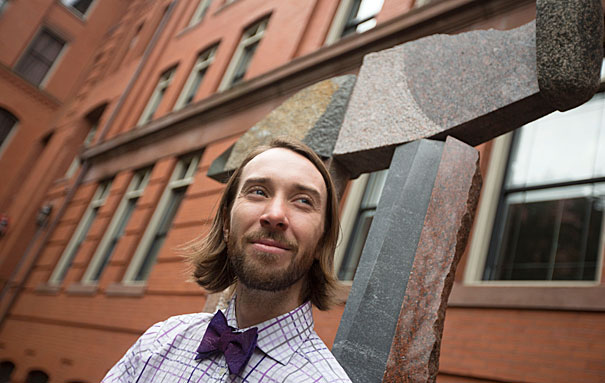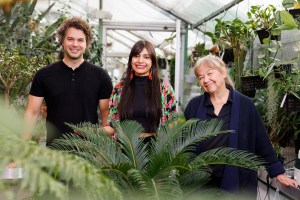Science & Tech
-

Rethinking — and reframing — superintelligence
Microsoft researcher says separating AI from people makes systems dangerous and unproductive
-
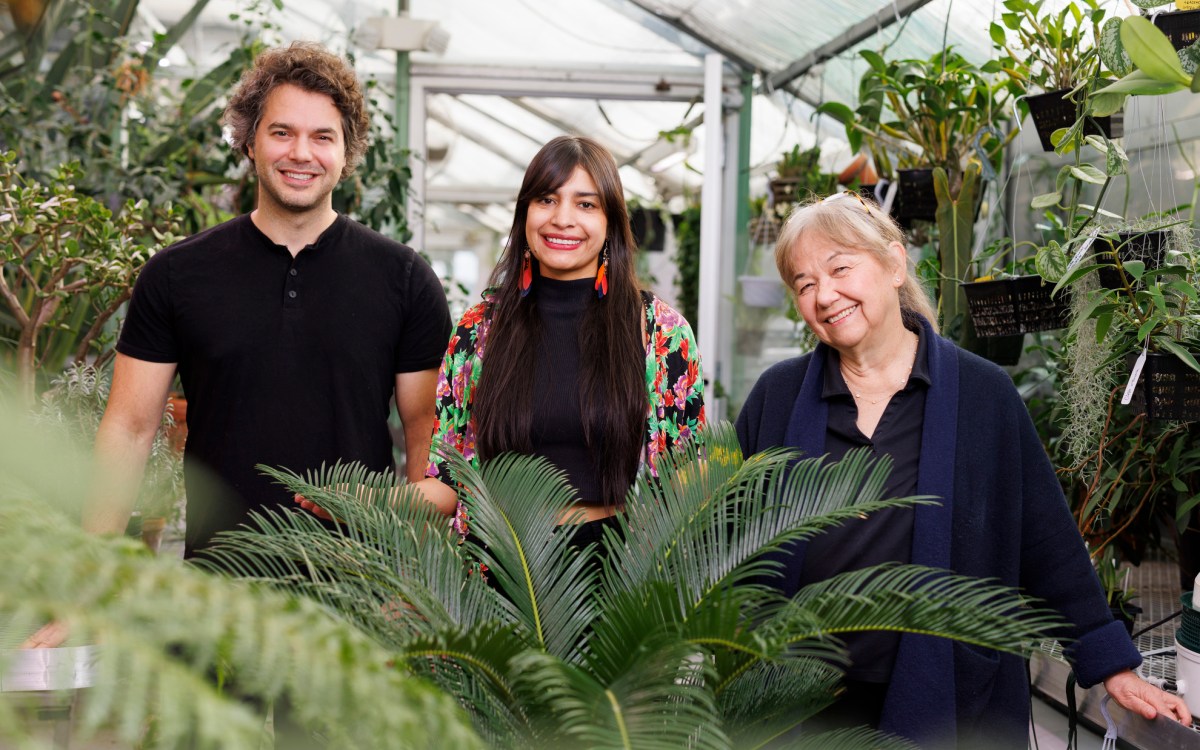
First, male gets heated up, then female, and then, you know
Study shows infrared radiation from plants serves as invitation to pollinating insects
-

‘Consciousness’
What we know and don’t know about the life of your mind
-
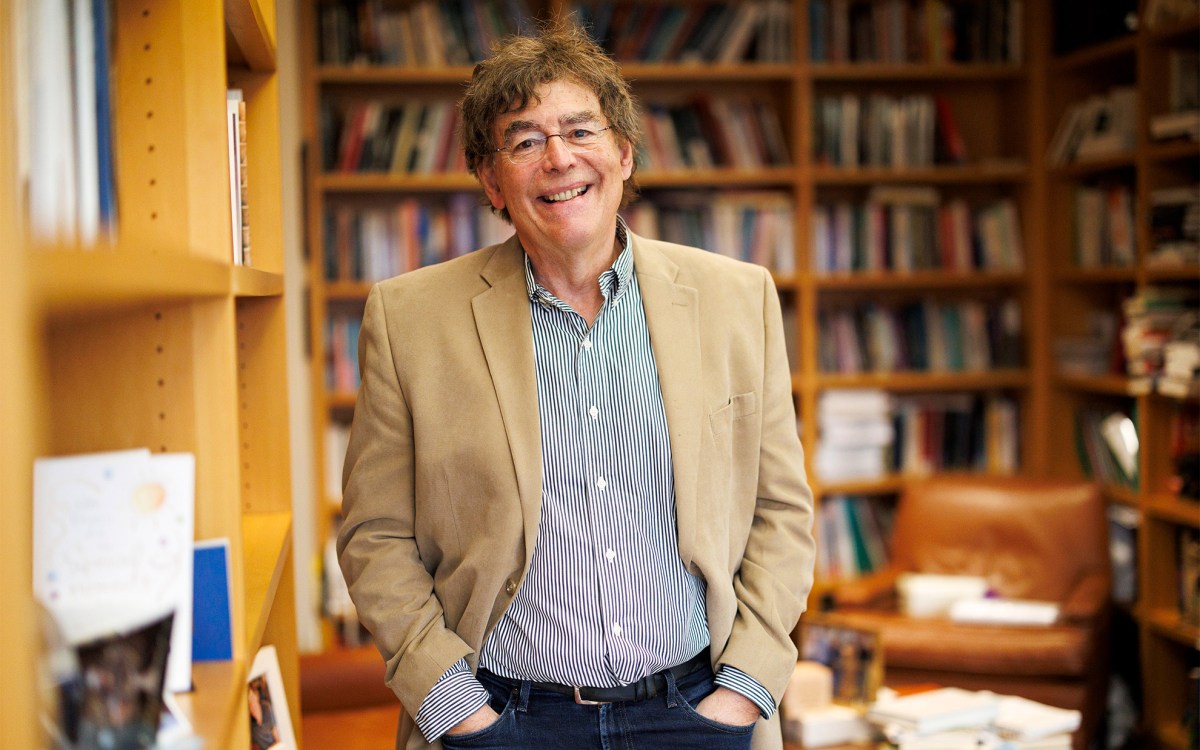
Science needs contrarians, and contrarians need support
Institute of Quantitative Social Science initiative tailored to researchers exploring provocative ideas
-

Cracking the code of why, when some choose to ‘self-handicap’
New research also offers hints for devising ways to stop students from creating obstacles to success

-

How memory works (and doesn’t)
In podcast, scientists explain why remembering is more reconstruction than replay
-
Perfecting digital imaging
Despite advances, the best software and video cameras cannot seem to get computer-generated images and digital film to look exactly the way our eyes expect them to. Harvard’s Hanspeter Pfister and Todd Zickler are working to narrow the gap between “virtual” and “real” by asking the question: How do we see what we see?

-
The next gold rush: Outer space?
New observations confirm that colliding neutron stars create short gamma-ray bursts, and such collisions produce rare heavy elements, including gold. Researchers at the Harvard-Smithsonian Center for Astrophysics believe the Earth’s gold likely came from colliding neutron stars.

-
Efficiency in the forest
Spurred by increasing levels of atmospheric carbon dioxide, forests over the past two decades have become dramatically more efficient in how they use water, a Harvard study has found.
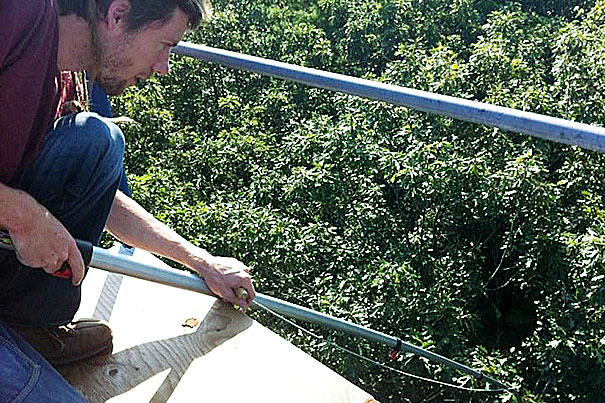
-
Designing a cleaner future
A slum on the outskirts of Accra, Ghana, received major media attention when the world realized it’s where computers go to die. That was when Harvard undergraduate Rachel Field ’12 devoted her senior thesis project to addressing the problem. Her solution was an award-winner.
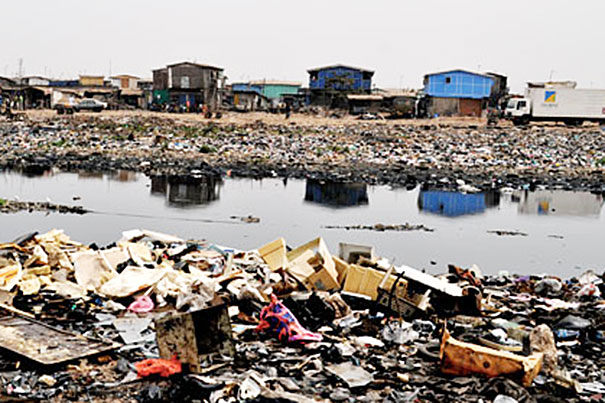
-
Avoiding the digital ‘flock’
In his new book, “Rewire,” former Berkman Fellow Ethan Zuckerman challenges the digital world to connect with others, using tools to overcome people’s “flocking” instincts.

-
Right down the middle, explained
The ability to throw an object with great speed and accuracy is a uniquely human adaptation, one that Harvard researchers say played a key role in our evolution.
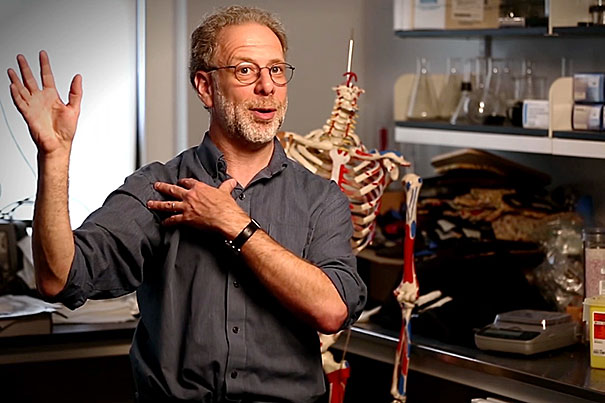
-
Map to renewable energy?
Researchers hoping to make the next breakthrough in renewable energy now have plenty of new avenues to explore — Harvard researchers this week released a database of more than 2 million molecules that might be useful in the construction of organic solar cells for the production of renewable energy.
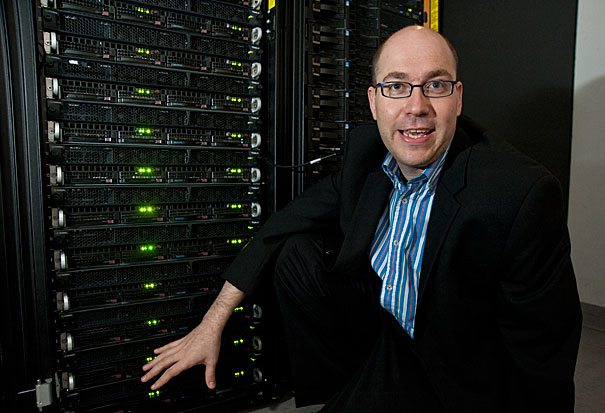
-
Taking stock of technology
At the recent Harvard IT Summit, Anne Margulies, vice president and University chief information officer, mentioned how Harvard had been at the forefront of information technology since its inception, even to the point of naming the burgeoning field.

-
Science, front and center
A Harvard/MIT conference brought together young scientists and experts to explore best practices in communicating science to wider audiences.
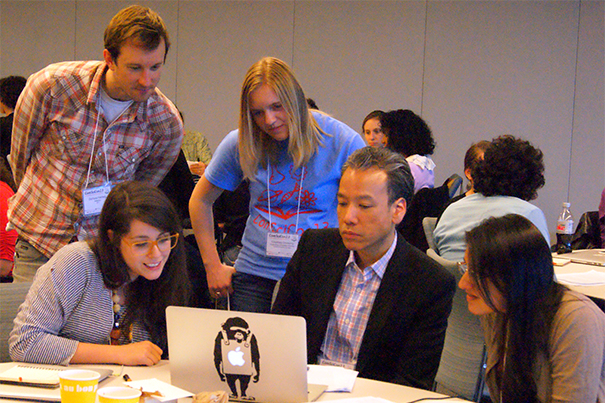
-
Looking at chimp’s future, seeing man’s
The fate of chimpanzees in Africa is largely in the hands of increasing numbers of poor, rural dwellers crowding the primates’ forest homes. That is why an educational project begun near Uganda’s Kibale National Forest focuses on 14 schools teaching almost 10,000 children, researchers say.
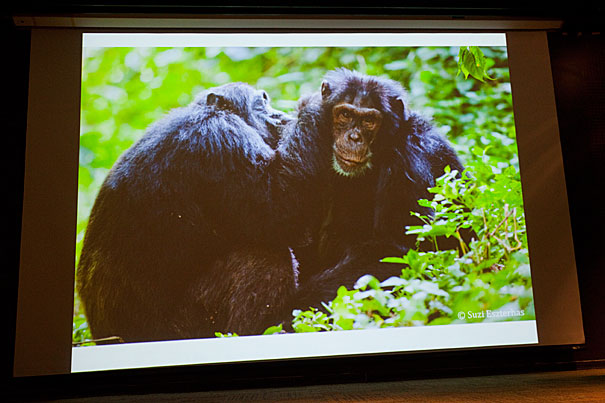
-
Reputation as a lever
Using enrollment in a California blackout prevention program as an experimental test bed, a team of researchers showed that although financial incentives boosted participation slightly, making participation in the program observable produced a threefold increase in sign-ups.
-
Songs from the stars
Gerhard Sonnert, a research associate at the Harvard-Smithsonian Center for Astrophysics, has created a new website that allows listeners to literally hear the music of the stars.
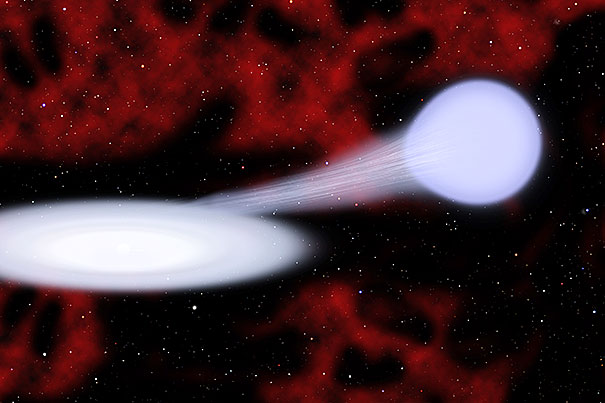
-
Urgent prep work
Humanitarian relief workers and climate scientists gathered in Cambridge this week to discuss the connection between climate change and humanitarian disasters and what relief workers can learn from science.
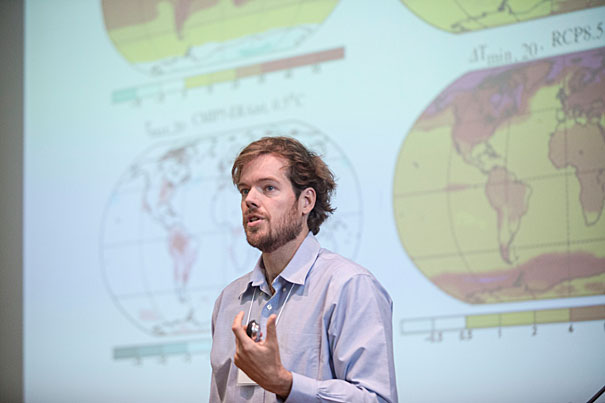
-
The trouble with Kepler
A malfunction aboard NASA’s Kepler Space Telescope has jeopardized what has been one of the agency’s highest-profile missions, one that has revealed a galaxy rich with planets. The Gazette talked to Astronomy Professor Dimitar Sasselov, one of the mission’s principal investigators, about the implications.
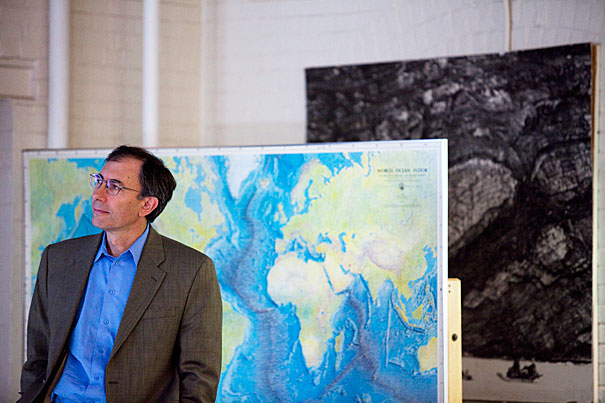
-
The nearness of you
In research described earlier this year in the Personality and Social Psychology Bulletin, Elinor Amit, a College Fellow in psychology, along with two collaborators, Cheryl Wakslak and Yaacov Trope, showed that people increasingly prefer to communicate verbally (versus visually) with people who are distant (versus close) — socially, geographically, or temporally.
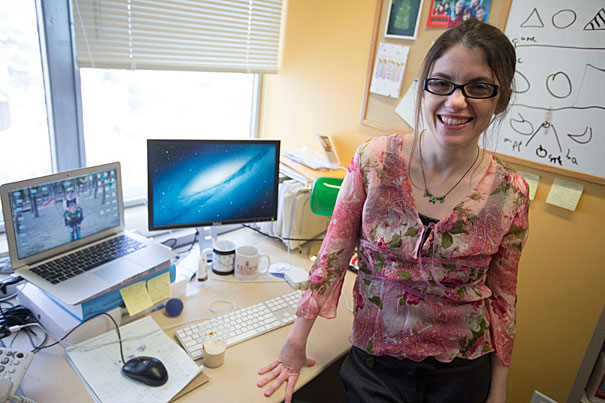
-
How to protect cyclists
Four Harvard School of Public Health students presented recommendations to the Boston City Council on how to make Boston a safer city for cyclists.
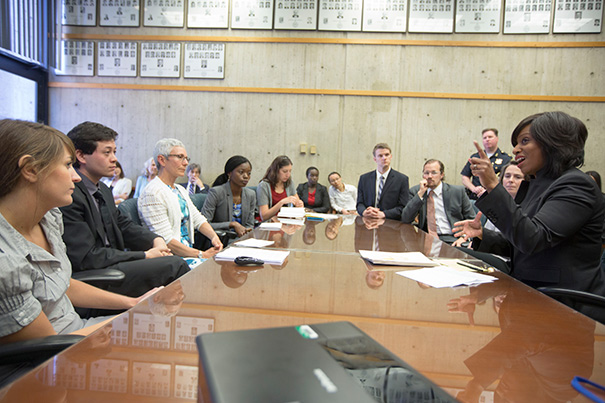
-
Building with an eye on the sky
Real estate developer Jonathan Rose highlighted recent progress in incorporating green features into affordable housing projects, saying America’s cities provide an energetic counterpoint to the stagnation in Washington, D.C.
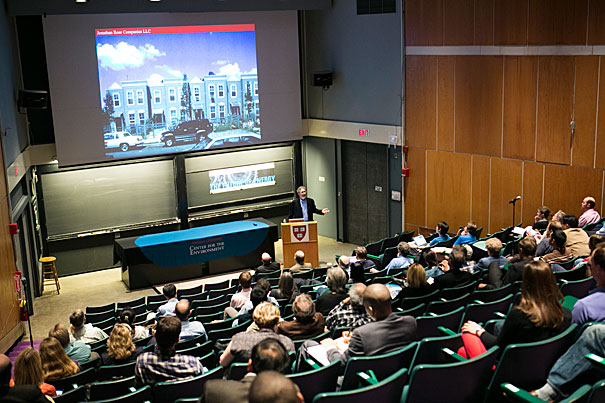
-
Projectile learning
Students in Matthew Liebmann’s “Encountering the Conquistadors” class recently got a feel for prehistoric life, trying their hands at an ancient weapon called the atlatl.
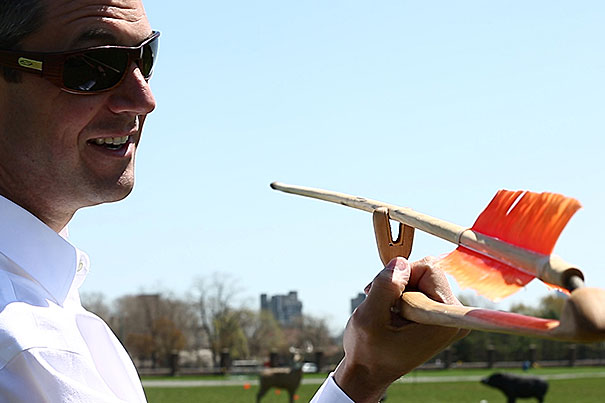
-
Robotic insects make first controlled flight
The demonstration of the first controlled flight of an insect-sized robot is the culmination of more than a decade’s work, led by researchers at the Harvard School of Engineering and Applied Sciences and the Wyss Institute for Biologically Inspired Engineering at Harvard.
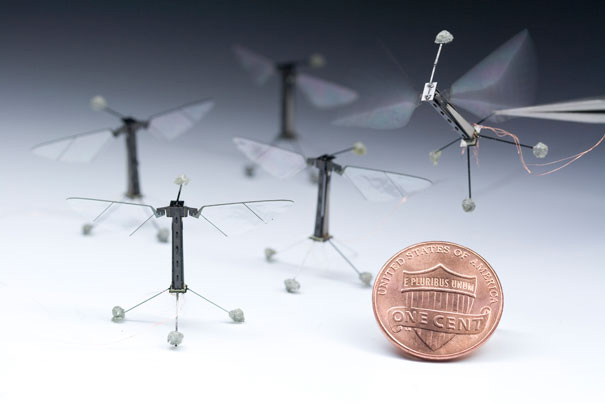
-
Understanding student weaknesses
As part of an unusual study that surveyed 181 middle school physical science teachers and nearly 10,000 students, researchers found that the most successful teachers were those who knew what students would get wrong on standardized tests.
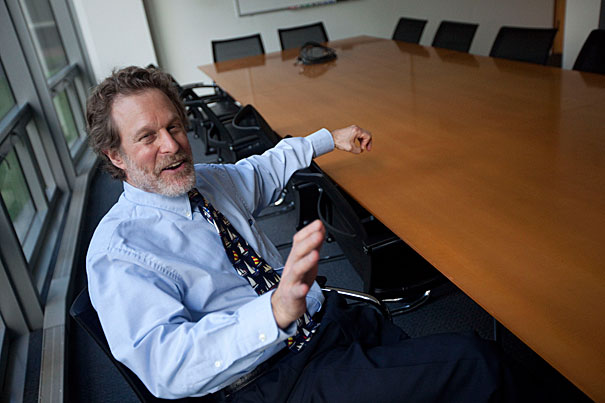
-
Seeking fairness in ads
Latanya Sweeney, Harvard professor of government and technology in residence, wants to add a new factor to the weighting Google uses when delivering online ads, one that measures bias. In a new paper, she describes how such a calculation could be built into the ad-delivery algorithm Google uses.
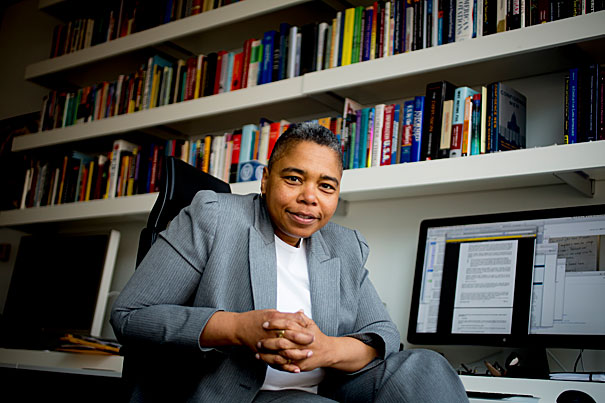
-
Science in service
Teams of students from “Engineering Sciences 20: How to Create Things and Have Them Matter” in the Harvard School of Engineering and Applied Sciences are working to create unusual products that are designed to change the world.
-
The problem with predictions
People would like to predict the future, says author and mathematician David Orrell, but it remains quite a difficult thing to do, even with lots of data at hand.
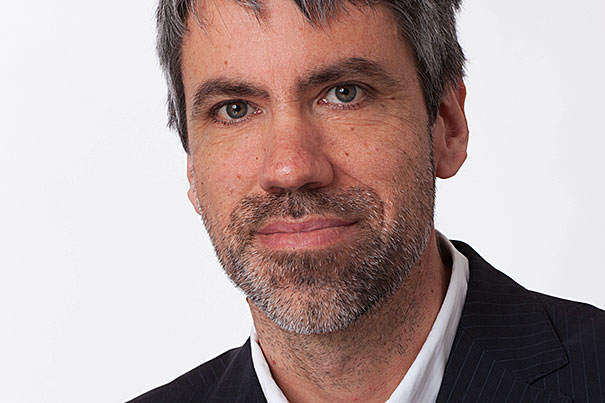
-
Robot hands gain a gentler touch
Researchers at the Harvard School of Engineering and Applied Sciences have developed an inexpensive tactile sensor for robotic hands that is sensitive enough to turn a brute machine into a dexterous manipulator.

-
Insignificant, with a lousy future
Theoretical physicist Lawrence Krauss described a universe with mysterious particles popping in and out of existence, in which the discoveries of dark energy and dark matter have made mankind more insignificant than ever.
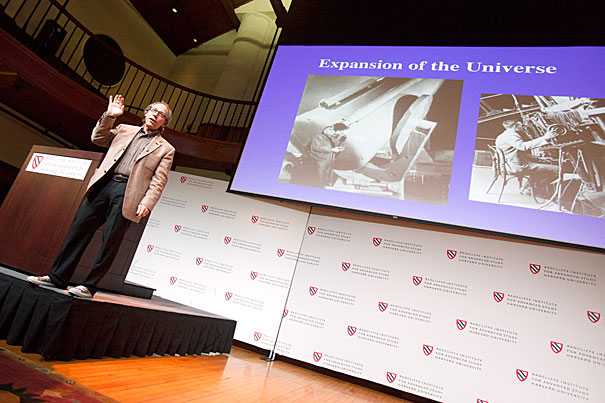
-
Pitcher plants provide tipping point
New research out of the Harvard Forest offers insight on exactly when the tipping point occurs that can disrupt the intricate web of life in a lake.

-
Earth feels impact of middle class
The rise of the middle class is a bigger environmental challenge than the rising global population, according to Sir David King, the former science adviser to the British government, who urged the adoption of sustainable development as a way to manage growing global demands in a finite world.
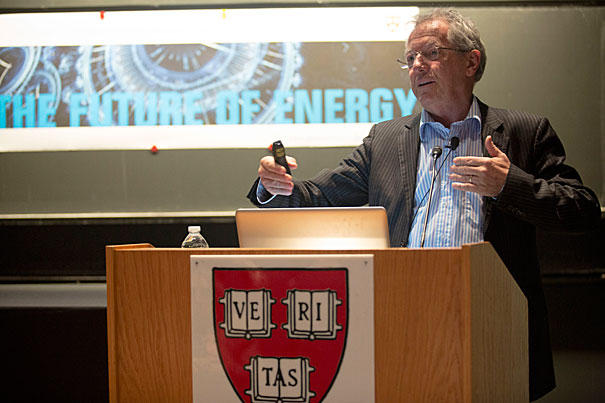
-
Water worlds surface
Astronomers have found a planetary system orbiting the star Kepler-62. This five-planet system has two worlds in the habitable zone — the distance from their star at which they receive enough light and warmth for liquid water to theoretically exist on their surfaces.

-
Putting the stars within reach
Two communications specialists at the Chandra X-Ray Observatory have authored a guide to the universe, aiming to show people around a universe they say belongs to us all.
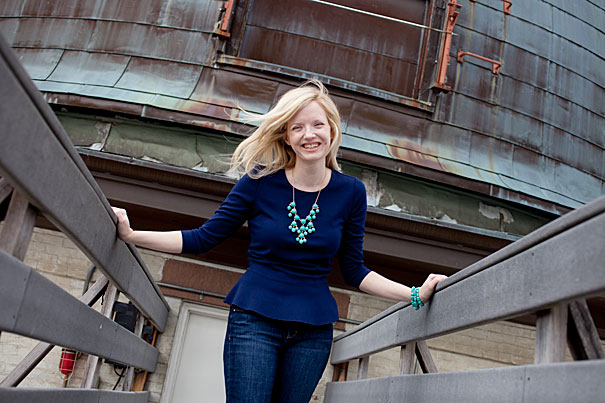
-
Warmth across 600 years
Harvard researchers are adding nuance to our understanding of how modern and historical temperatures compare.
